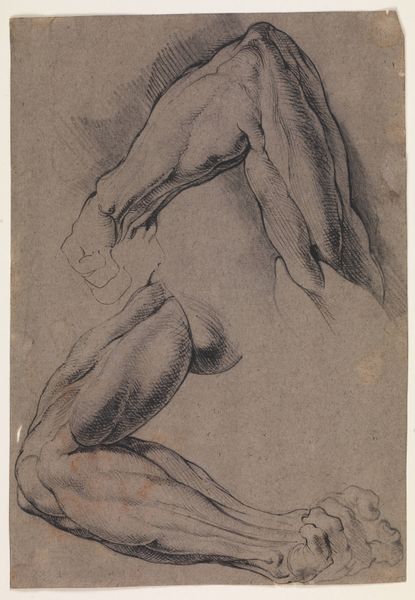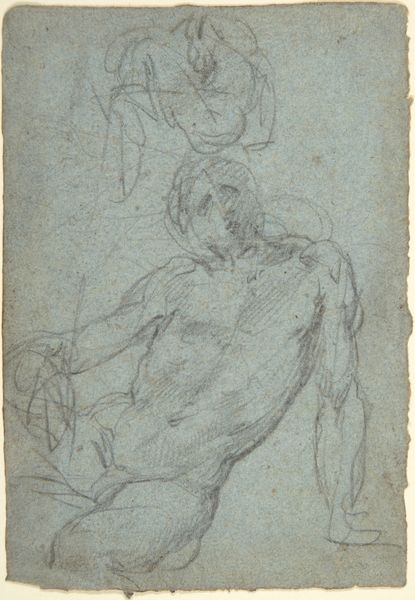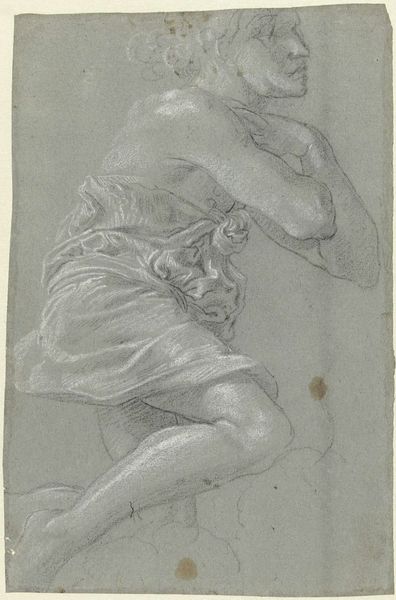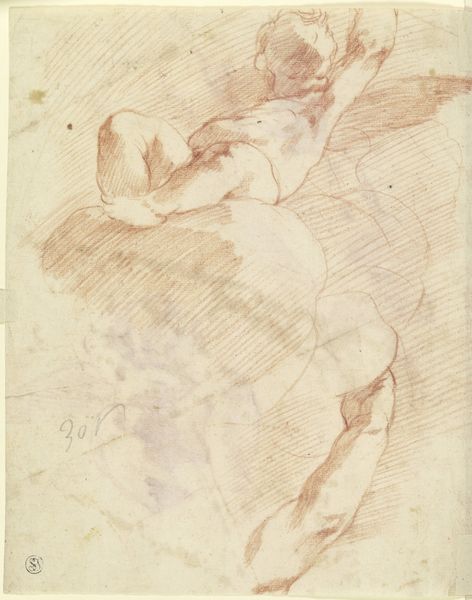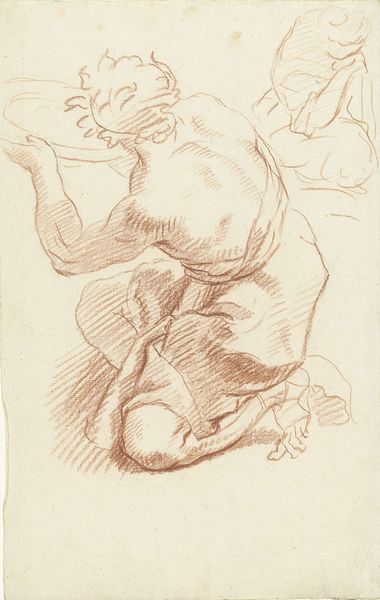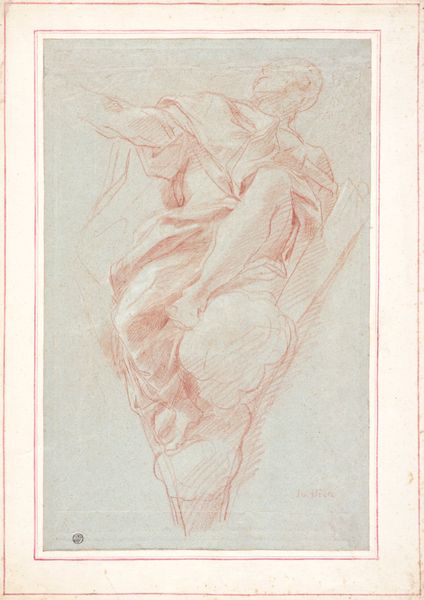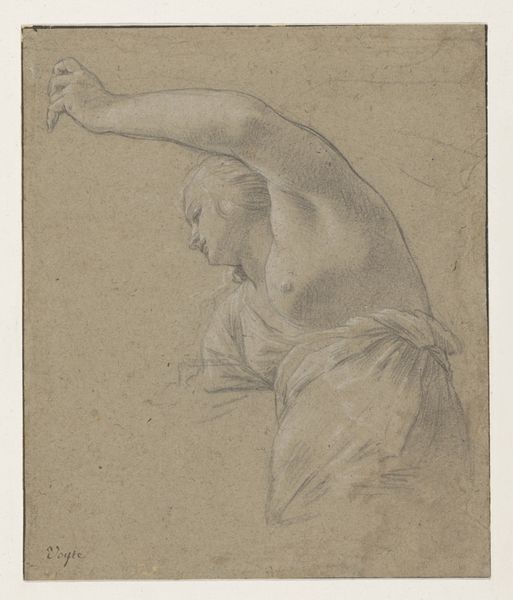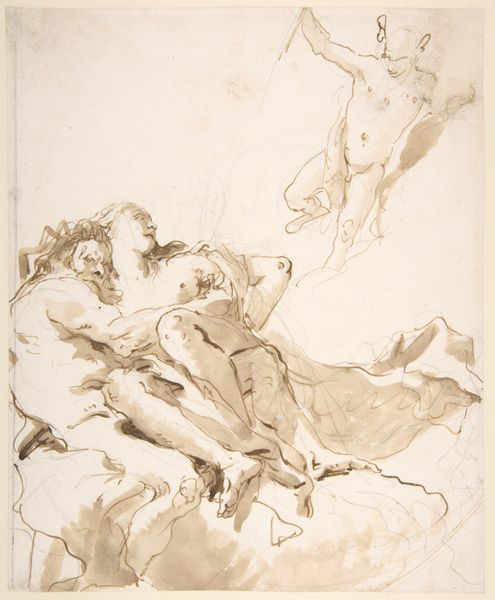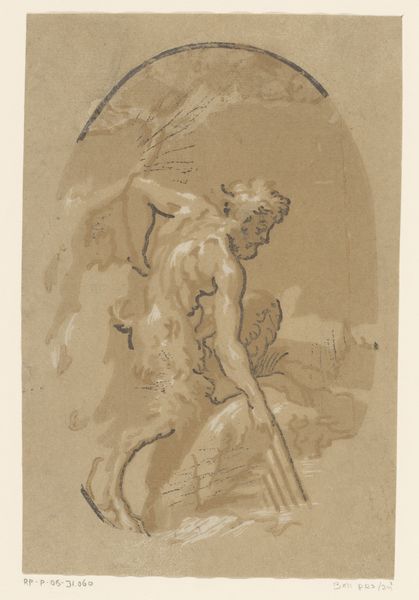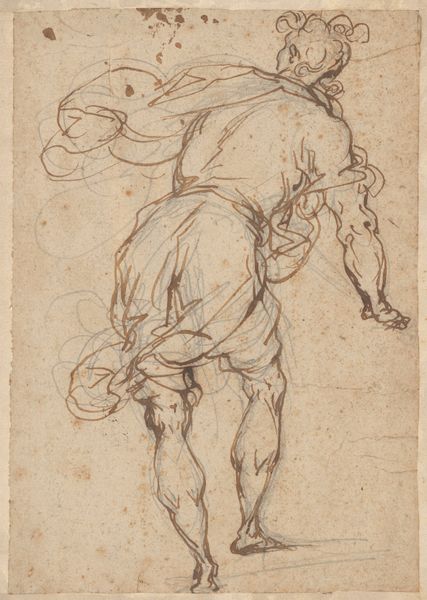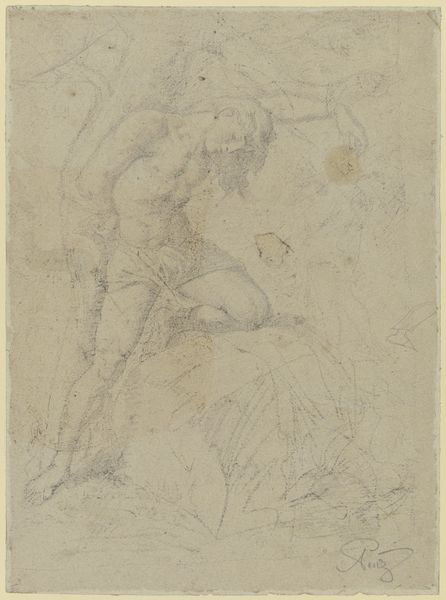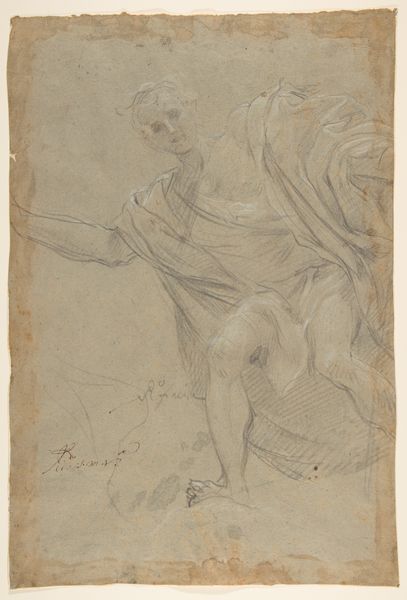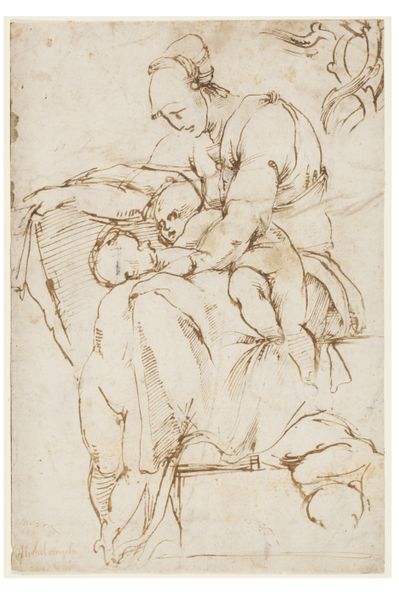
drawing, paper, ink
#
portrait
#
drawing
#
figuration
#
paper
#
ink
#
academic-art
Dimensions: sheet: 27.4 × 18.5 cm (10 13/16 × 7 5/16 in.) mount: 35.8 × 24.7 cm (14 1/8 × 9 3/4 in.)
Copyright: National Gallery of Art: CC0 1.0
Curator: Here we have George Richmond’s 1838 drawing, “Tom -- Florence,” crafted with ink on paper. The first thing that strikes you, doesn't it, is this collection of legs and feet rendered in stark, almost clinical detail. Editor: Yes, my immediate reaction is that this fragmented, unfinished quality underscores the limitations of representation itself. Whose bodies are these, and what are their stories? There's a voyeuristic element too, the feeling that we're looking at something intimate, decontextualized and, perhaps, vulnerable. Curator: I find it interesting how Richmond used the qualities inherent in the medium—the paper, the ink, the very act of drawing—to explore human form. Notice the areas of the page that remain untouched, in sharp contrast to the intensity of the studied figures, which directs attention to Richmond’s meticulous technique, showing both process and intention. How this labour transforms basic materials is critical here. Editor: Absolutely, and thinking critically about the time period, it is hard to not focus on the politics of looking. As Richmond, as a member of the establishment class, depicts these bodies with focused study and detail, how do issues of gender, class and even potential servitude enter the frame? This also asks questions about how the artistic and scientific communities would influence and reflect each other regarding power dynamics within representational creation. Curator: Richmond appears intent on mastering rendering human form, an echo of the academic ideals that defined much artistic training in that time, also mirroring medical and anatomical studies of the same era. This approach served very concrete purposes; Richmond supported himself and his family through his prolific output of portraits. The economic dimensions of his production are critical. Editor: Thinking more about the portrait's materiality and its setting within larger societal forces is essential for me. Curator: Ultimately, this exploration challenges the notion of 'high art' by focusing not just on its aesthetic quality but the very mechanics that led to its making. Editor: Right, and through an understanding of socio-historical contexts of viewing it allows for us to view it more empathetically through critical discourse and understanding. Curator: A perspective from the bench in this drawing's history reminds me about the critical lens through which one assesses both art and industry, an artistic method's purpose and influence. Editor: And hopefully sparking crucial conversations.
Comments
No comments
Be the first to comment and join the conversation on the ultimate creative platform.
